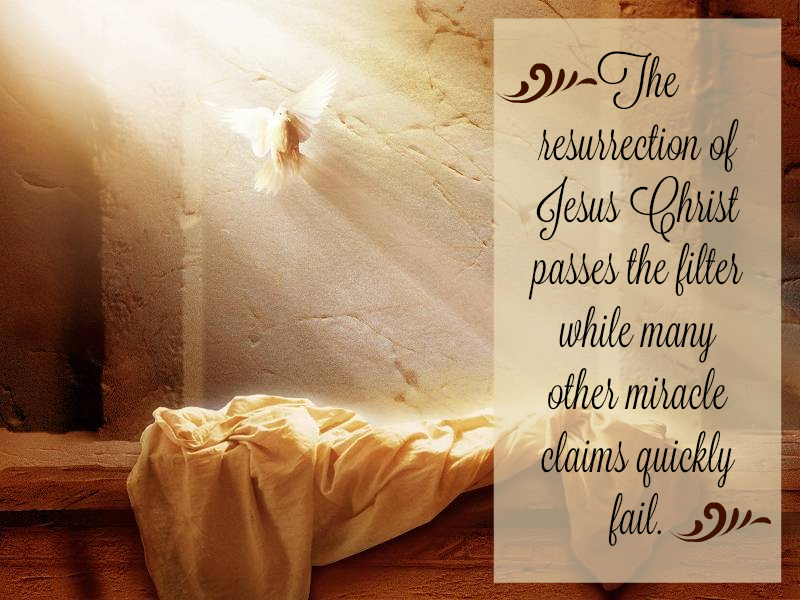Kerby Anderson
The Bible describes many miracles, but we also have other literature and even modern claims of miracles. Is there any way to evaluate these claims in a rational way?
Dr. Timothy McGrew (Chairman of the Department of Philosophy at Western Michigan University) was recently on my radio program. He has developed a six-part test that uses the acrostic DOUBTS. The resurrection of Jesus Christ passes the filter while many other miracle claims quickly fail.
D is for distant events. For example, the miracles Apollonius supposedly did in India are first reported far away in the Roman Empire. O is for opinions that are already established. We should suspect stories of miracles that seem to affirm standing opinions to those in power. Dr. McGrew points to the healing miracles attributed to of Vespasius as an illustration. U is for uncertain events. A rainstorm that happens that helped an army is probably not a miracle but a natural occurrence and fortunate coincidence.
B is for belated reports. Some of the reports of miracles were written long after the events. Consider the so-called miracles performed by Pythagoras. He lived around 500 BC. The first reports we have of these supposed miracles occur in AD 300.
T is for trivial things. Thomas Henry Huxley once said that if twelve good Englishmen told him they saw a centaur trotting down Pickadilly Lane, he would not believe it. But this event makes no claims on my life and it doesn’t change my doctrine or worldview. The resurrection is a much different claim. S is for self-serving miracle reports. Some of the claims that Joseph Smith made could be put in this category. There could be another motives for his claims.
This test is a good one to use when we come across claims of miracles.
 Listen Online
Listen Online Watch Online
Watch Online Find a Station in Your Area
Find a Station in Your Area









 Listen Now
Listen Now Watch Online
Watch Online
